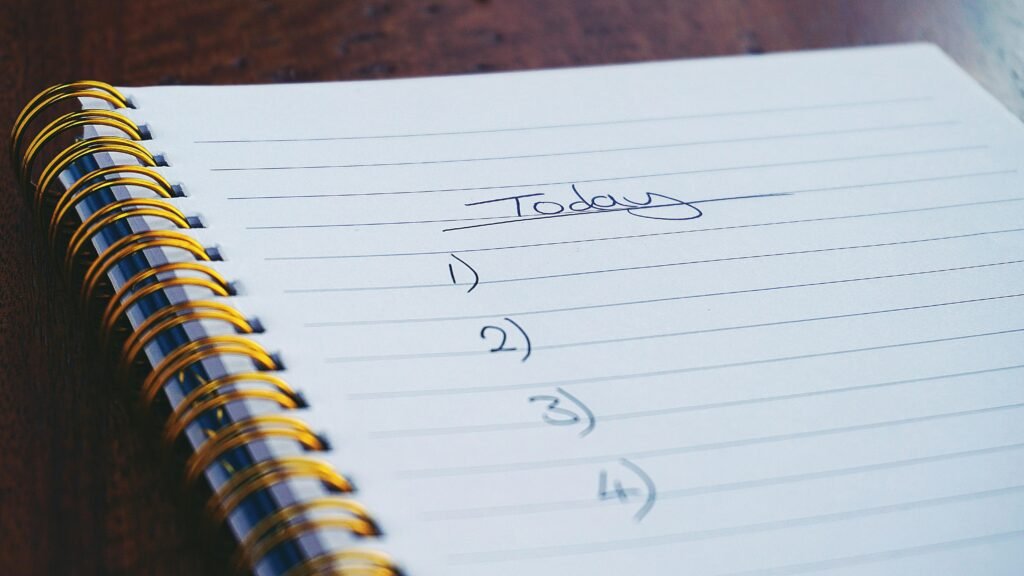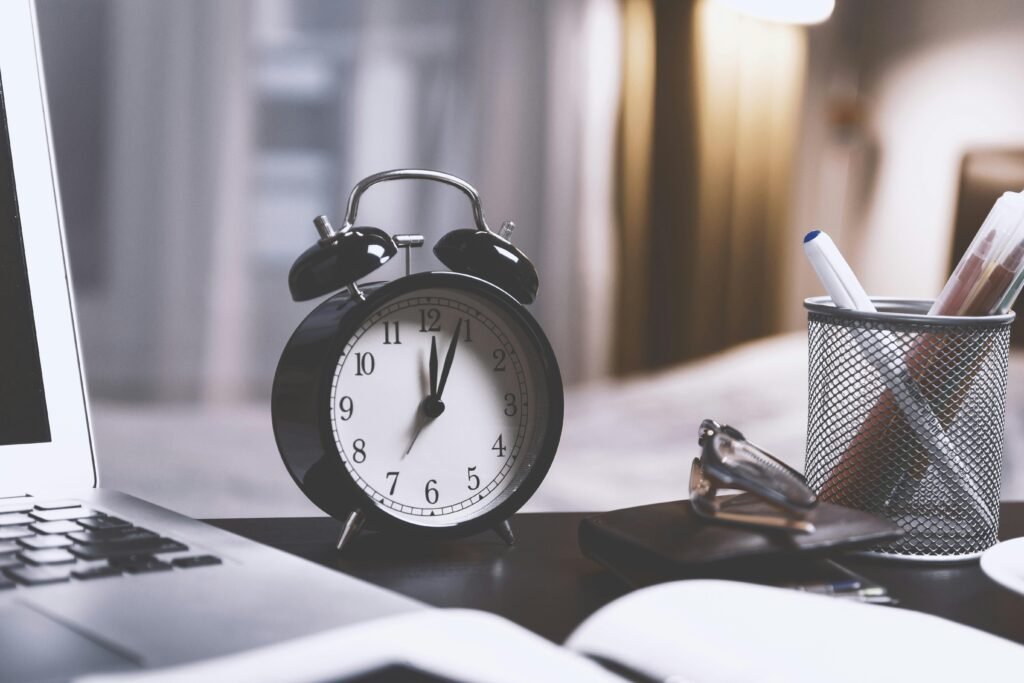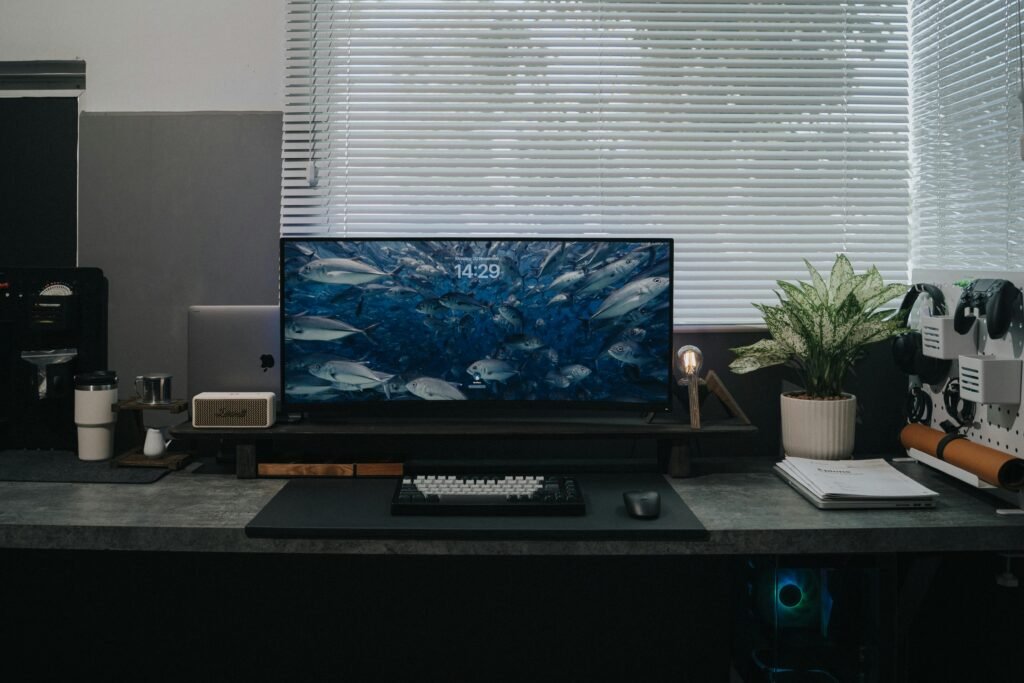
Understanding Productivity
Productivity is about more than just checking off tasks on a to-do list.
It’s the strategic use of your time and energy to accomplish meaningful goals.
To truly grasp productivity, it’s important to understand that being busy doesn’t necessarily mean being productive.
Busywork might fill your day, but it doesn’t always move you closer to your objectives.
At the core of productivity is the idea of working smarter, not harder.
This involves identifying tasks that have the most significant impact and focusing your efforts there.
It’s about quality over quantity, ensuring that the tasks you engage in are aligned with your long-term goals and vision.
A key aspect of understanding productivity is recognizing the value of intentionality.
This means approaching your tasks with a clear purpose and a plan.
Instead of diving into your day haphazardly, take a moment to outline what you aim to achieve and how you plan to do it.
This approach not only helps in maintaining focus but also in measuring progress effectively.
Mindset also plays a crucial role.
Adopting a growth mindset, where challenges are seen as opportunities for improvement rather than obstacles, can significantly enhance productivity.
When you view setbacks as learning experiences, you’re more likely to persevere and find innovative solutions to problems.
Additionally, understanding productivity involves acknowledging the importance of energy management.
Your energy levels fluctuate throughout the day, and being attuned to these natural rhythms can help you schedule tasks when you’re most alert and focused.
For example, if you’re a morning person, tackling complex tasks early in the day might be more effective.
Conversely, if you find your energy peaks in the afternoon, plan your most demanding work for that time.
Finally, an often-overlooked element of productivity is the significance of self-care.
Taking care of your mental and physical well-being ensures that you have the stamina to stay productive in the long run.
Integrating activities that replenish your energy, such as exercise, adequate sleep, and hobbies, can greatly enhance your overall productivity.
Prioritizing Tasks

One of the key elements to being more productive is learning how to prioritize tasks.
Utilizing a priority matrix can be immensely beneficial in this regard.
This tool helps you differentiate between urgent and important tasks, allowing you to focus on what truly matters.
By learning to prioritize effectively, you can free up time for more critical tasks and personal growth.
Prioritizing tasks also means setting clear goals and breaking them down into manageable steps.
This approach ensures that larger projects don’t become overwhelming and allows you to track your progress more easily.
Start by identifying your long-term objectives and then break them down into smaller, actionable tasks.
This not only makes the work seem less daunting but also provides a clear roadmap to follow.
Another strategy to consider is the Eisenhower Box, which divides tasks into four categories: urgent and important, important but not urgent, urgent but not important, and neither urgent nor important.
This method helps you visualize where to allocate your time and energy, ensuring that you focus on tasks that will make the most significant impact.
Delegating is another effective way to manage your priorities.
Not every task requires your direct involvement.
By delegating tasks that others can handle, you free up your time to focus on more critical activities.
It’s important to trust your team and provide them with the necessary resources to succeed.
Additionally, setting deadlines can help keep you on track.
Deadlines create a sense of urgency and can motivate you to complete tasks more efficiently.
However, it’s essential to set realistic deadlines to avoid unnecessary stress and burnout.
Finally, regularly reviewing and adjusting your priorities is crucial.
What was important yesterday might not be as relevant today.
By frequently reassessing your priorities, you ensure that your efforts are always aligned with your current goals and circumstances.
Time Management Techniques

Effective time management is a cornerstone of productivity.
One highly-regarded method is the Pomodoro Technique, which involves working in focused intervals of 25 minutes, followed by a short break.
This approach maintains high concentration levels and reduces procrastination.
Another valuable strategy is time blocking, which entails assigning specific periods to different tasks.
This practice helps prevent overcommitment and ensures that each task gets the attention it deserves.
Time blocking is particularly useful for managing multiple projects and deadlines, as it creates a visual roadmap for your day.
Additionally, utilizing a calendar system can significantly aid in organizing your schedule.
Digital calendars, especially those that integrate with your email and task management apps, provide an easy way to track deadlines, appointments, and reminders.
Setting up recurring events for routine tasks can automate parts of your schedule, freeing up mental space for more critical activities.
For instance, understanding the dynamics of household chores can help tailor your time management techniques.
Such insights can inform how you distribute tasks within a household, ensuring that time is used efficiently and equitably.
Another effective technique is task batching, which involves grouping similar tasks together and completing them in one focused session.
This method reduces the cognitive load associated with constantly switching between different types of work, allowing for greater efficiency and concentration.
Setting priorities within your time management plan is crucial.
The Eisenhower Box, which categorizes tasks into urgent and important, important but not urgent, urgent but not important, and neither urgent nor important, can help you decide where to focus your efforts.
This visual tool clarifies which tasks are worth your time and which can be delegated or postponed.
Finally, regular reviews of your time management strategies are essential.
By assessing what works and making necessary adjustments, you can continue to refine your approach, ensuring that your productivity remains high and aligned with your evolving goals.
Minimizing Distractions

A well-organized workspace is crucial for minimizing distractions and boosting productivity.
Start by ensuring that your desk is tidy, with only essential items within reach.
Clutter can be a significant distraction, so regularly declutter your workspace to maintain focus.
Arrange your materials logically, so you don’t waste time searching for what you need.
Digital distractions are another major productivity killer.
Notifications from your phone, social media, and email can disrupt your flow and break your concentration.
One effective strategy is to designate specific times to check your devices, rather than allowing constant interruptions.
You can also use productivity apps designed to limit digital distractions by blocking access to certain websites or apps during work periods.
Noise can also be a disruptive factor in your environment.
If you work in a noisy setting, consider using noise-canceling headphones or listening to background music that helps you concentrate.
Creating a quiet and serene atmosphere can significantly enhance your ability to focus on the task at hand.
Additionally, it’s essential to set boundaries with those around you.
Communicate your work hours to family members, roommates, or colleagues to minimize interruptions.
A simple “Do Not Disturb” sign on your door can signal that you’re in the middle of focused work and should not be interrupted unless it’s urgent.
Another effective way to minimize distractions is to plan your tasks.
Having a clear, prioritized to-do list for the day can help keep you on track and reduce the temptation to engage in non-essential activities.
When you know exactly what you need to accomplish, it’s easier to stay focused and avoid distractions.
Lastly, taking control of your digital workspace is equally important.
Close unnecessary browser tabs and keep only the applications you need open.
Organize your digital files so you can quickly locate important documents without sifting through a cluttered desktop.
By thoughtfully arranging both your physical and digital spaces, you can create an environment that promotes concentration and efficiency, allowing you to be more productive throughout the day.
The Power of Breaks

Breaks are more than just pauses in your workday; they are essential for maintaining peak performance.
Regular intervals for rest allow your mind to rejuvenate, preventing the mental fatigue that can accumulate during extended periods of concentration.
Engaging in short, refreshing activities during these breaks, such as stretching, taking a brief walk, or practicing deep breathing exercises, can significantly enhance your cognitive functions and overall productivity.
Science supports the value of breaks.
Studies have shown that our brains aren’t designed to focus for hours on end.
Instead, they function optimally with periods of intense focus followed by rest.
This cyclical pattern of work and rest helps maintain high levels of creativity and problem-solving skills, which are crucial for complex tasks.
Incorporating breaks into your daily schedule can also aid in managing stress levels.
Brief moments away from your desk can provide a mental reset, allowing you to return to your tasks with a fresh perspective.
For instance, stepping outside for a few minutes of fresh air or engaging in a quick mindfulness exercise can offer a welcome respite from the pressures of work.
Additionally, breaks can enhance your physical well-being.
Prolonged sitting has been linked to various health issues, including back pain and cardiovascular problems.
Taking short breaks to move around can mitigate these risks, promoting better physical health and, consequently, better overall productivity.
One effective strategy for integrating breaks into your work routine is the Pomodoro Technique, which alternates periods of focused work with short breaks.
This method not only sustains high concentration levels but also reduces the likelihood of burnout by ensuring regular intervals of rest.
It’s also beneficial to tailor your breaks to your personal preferences and energy levels.
Whether it’s enjoying a cup of coffee, reading a few pages of a book, or simply sitting quietly, choosing activities that you find genuinely relaxing will maximize the restorative effects of your breaks.
By thoughtfully incorporating breaks into your day, you can maintain high levels of productivity and well-being, making it easier to achieve your goals and excel in your endeavors.
Leveraging Technology

In today’s digital age, technology offers an array of tools that can significantly enhance productivity.
Apps designed for task management, such as Trello or Asana, can help you organize your workload and keep track of deadlines.
These platforms offer features like progress tracking, collaboration capabilities, and customizable boards, enabling you to tailor your workflow to your specific needs.
Note-taking apps like Evernote or OneNote provide a centralized location for capturing ideas, meeting notes, and research.
These tools often integrate with other applications, allowing you to easily link your notes with related tasks or calendar events.
By having all your information in one place, you can save time and improve your organizational skills.
Calendar software, such as Google Calendar or Microsoft Outlook, can help you manage your schedule more effectively.
These tools allow you to set reminders for important deadlines, schedule meetings, and even block out focused work time.
Some calendar apps also offer features like time zone conversion and meeting room booking, making it easier to coordinate with colleagues in different locations.
Automation tools can also play a significant role in boosting productivity.
Services like Zapier or IFTTT enable you to automate repetitive tasks, such as data entry or social media posting.
By setting up automated workflows, you can free up more time for strategic activities that require your full attention.
For communication and collaboration, platforms like Slack or Microsoft Teams provide a unified space where teams can share updates, files, and feedback in real-time.
These tools often integrate with other productivity apps, creating a seamless workflow that reduces the need for constant email exchanges and meetings.
Additionally, time-tracking apps like Toggl can help you understand how you spend your time and identify areas for improvement.
By analyzing your time logs, you can make more informed decisions about how to allocate your hours, ultimately leading to better time management and increased productivity.
Leveraging these technological tools can streamline your workflow, enhance collaboration, and ensure that you are making the most of your time.
Healthy Lifestyle Choices

Healthy lifestyle choices are fundamental to boosting productivity.
Proper nutrition, regular exercise, and sufficient sleep are essential for maintaining high energy levels and sharp focus.
Consuming a balanced diet rich in fruits, vegetables, lean proteins, and whole grains provides the necessary nutrients for optimal brain function.
Hydration is equally important, as even mild dehydration can impair cognitive abilities and decrease concentration.
Physical activity is another critical component.
Engaging in regular exercise, such as a brisk walk, yoga, or a workout at the gym, can enhance your mood and increase your energy levels.
Exercise promotes better blood flow to the brain, which supports cognitive function and can lead to more effective problem-solving and creativity.
Adequate sleep is paramount for maintaining focus and overall well-being.
For instance, people in Mexico, on average, enjoy 9 hours of sleep per night, which is conducive to high productivity levels.
Lack of sleep can lead to decreased alertness, impaired memory, and slower cognitive processing.
Establishing a consistent sleep schedule and creating a restful sleep environment can help ensure you get the rest you need.
Mental health is equally important.
Practices such as mindfulness meditation and deep breathing exercises can reduce stress and improve emotional regulation.
These activities help maintain mental clarity and resilience, allowing you to stay focused and motivated.
Incorporating these healthy habits into your daily routine supports both your body and mind.
By prioritizing nutrition, physical activity, sleep, and mental health, you create a foundation that enables you to tackle your tasks with greater efficiency and effectiveness.
Reflection and Adjustment

Reflection is a powerful tool for enhancing productivity.
By regularly evaluating your strategies, you gain insights into what methods are effective and which ones need tweaking.
This ongoing process allows you to fine-tune your approach, ensuring that you’re always optimizing your time and efforts.
Start by setting aside a few minutes at the end of each week to review your accomplishments and setbacks.
Assess whether you met your goals and identify any obstacles that hindered your progress.
This practice not only helps in identifying patterns but also in developing proactive solutions for future challenges.
Flexibility is key.
What worked for you last month might not be as effective now, given changing circumstances and new priorities.
Stay open to experimenting with different techniques and tools.
For instance, if a particular time management method isn’t delivering the desired results, don’t hesitate to try a new approach.
Incorporating feedback from peers and mentors can also provide valuable perspectives.
Sometimes, an external viewpoint can highlight areas for improvement that you might overlook.
Engaging in discussions with colleagues about their productivity strategies can offer new ideas and inspire you to refine your methods.
Regular reflection isn’t just about identifying what needs to change; it’s also about recognizing what you’re doing well.
Celebrate your successes, no matter how small.
Acknowledging your achievements can boost your motivation and confidence, encouraging you to maintain and build on those positive habits.
Lastly, keep your long-term goals in mind.
Reflecting on how your daily tasks align with your broader objectives can help you stay focused on what truly matters.
Adjusting your strategies to better support these goals ensures that you’re not just busy, but genuinely productive.
By making reflection and adjustment a regular part of your routine, you can continuously improve your productivity and achieve greater success in your endeavors.
